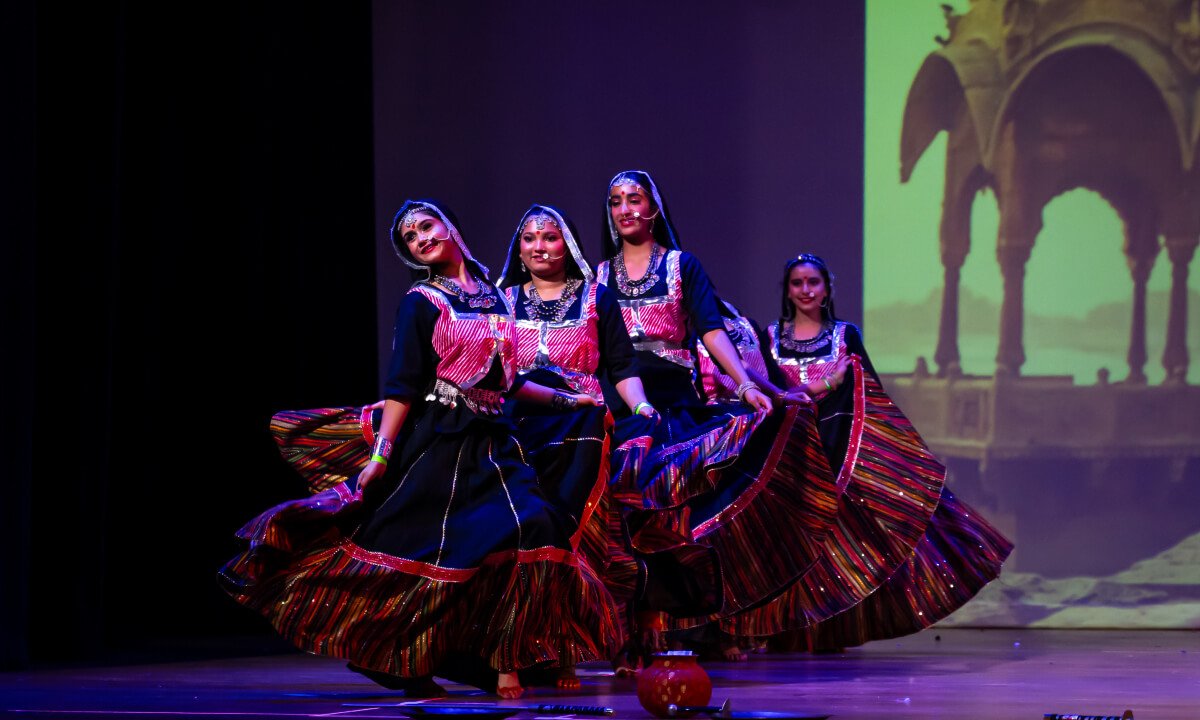folk dance
Experience the hypnotic, snake-like movements of Rajasthan’s Kalbeliya dance- a celebration of tradition and nomadic spirit.

The Kalbelia folk dance is a mesmerizing traditional folk dance from the desert regions of Rajasthan, India. It is performed by the Kalbelia community, a historically nomadic group known for their deep connection to snake charming, music, and storytelling. Kalbelia dance is a vibrant expression of their rich cultural identity and is often performed at festivals, celebrations, and special occasions, embodying grace, rhythm, and artistic storytelling.
The choreography of the Kalbelia dance is marked by fluid, serpentine movements, rapid spins, and expressive hand gestures that mirror the sinuous motion of a snake. Dancers move in captivating formations, showcasing agility and poise while responding to the energetic beats of traditional Rajasthani folk music, combined with rhythmic footwork and swirling skirts, creating a hypnotic visual spectacle that enchants audiences.
Students performing the energetic dance on stage.
A defining feature of Kalbelia dance is its live musical accompaniment, primarily played by male members of the community. The music is led by the Pungi, a traditional wind instrument of snake charmers, known for its distinctive, hypnotic melody that echoes through the performance, heightening its mystical allure. Percussion instruments such as the Dholak, Khartal, and Morchang add rhythm and depth to the performance, enhancing its dynamic energy. The dancers also incorporate expressive facial gestures and hand movements to narrate stories drawn from folklore, community legends, and nature.
Kalbelia musicians performing in a desert.
The costumes worn during the Kalbelia dance are as striking as the performance itself. Female dancers wear black ghagras (long skirts) and cholis (blouses) adorned with intricate embroidery, mirror work, and bead embellishments that shimmer under the stage lights. Their outfits symbolize the resilience and beauty of the desert landscape. Traditional silver jewelry, bangles, anklets, and elaborate headpieces enhance their regal appearance, creating a stunning visual contrast with their graceful movements.
Beyond its artistic appeal, Kalbelia is an emblem of cultural preservation. The dance form has gained international recognition, and in 2010, UNESCO inscribed Kalbelia dance and music into the Representative List of the Intangible Cultural Heritage of Humanity. Today, Kalbelia performances captivate audiences at global festivals, bridging tradition with contemporary appreciation. Kalbelia is more than just a dance—it is a living tradition passed down through generations as an oral and visual art form.